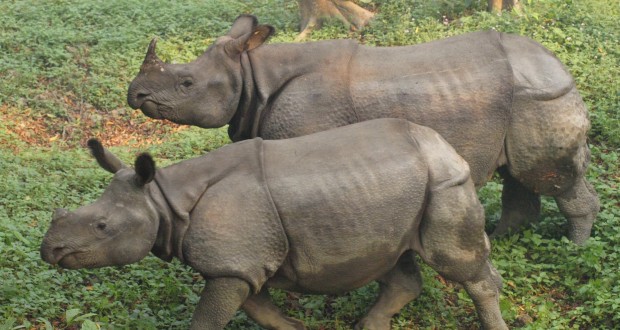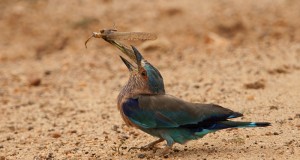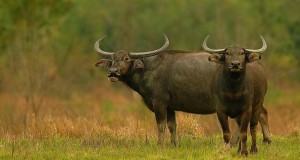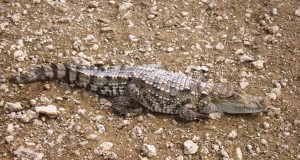Nepal’s park and reserves fall in all faunal and geographical zones and because of the physical difficulties of communication, all present problems for the tourist. The grandeur and elegance, the savagery of the Himalaya and the tranquility of the terai all make good homes for 300 species of mammals, 800 species of birds, numerous reptiles and amphibians and many thousand species of insects. The central massif of the Himalaya forms the bulk of Nepal. Stretching 500 miles (800 km) east to west and between 90-150 miles (144 — 240 km) north to south, the country is bounded by India to the west, south and east and by the Tibetan region of China to the north.
A lowland area of flat Coons (valleys) and riverine grasslands called the terai forms a belt along the southern borders with India. Over 75 percent of the rest of the country is mountainous and cut by great rivers flowing from the Tibetan plateau or the great ice caps of the Himalaya to the Gangetic plain of northern India.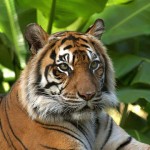
The country is divided into two distinct zoogeographic zones with the Kali Gandalci river forming a natural division between east and west. The north-south range in altitude
complicates the compressed and extensive variety of habitat, but ensures that no part of the country is without interest to the ornithologist, the trekker or in fact to any visitor.
The system of parks and reserves of Nepal was started in 1973 with funds and technical assistance from the United Nations Development Programme and the Food and Agriculture Organisation. Some areas•had earlier been set aside as hunting reserves by the Rana regime (1846-1950) and a small rhino reserve was established in Chitwan in 1961 following a 1959 survey by E.P. Gee, the British naturalist who had dedicated his life to the wildlife of the subcontinent.
The National Parks and Wildlife Conservation Project offices in Kathmandu can provide information, maps and checklists of birds and animals for most of the areas described below. Most travel companies in Kathmandu can give guidance, and Mountain Travel Pvt. Ltd. (PO Box 170, Kathmandu. Tel: 414505, 411562. Tlx: 2216 TIGTOP NP) can give detailed on the Himalayan and trans-Himalayan areas.
Royal Bardia Wildlife Reserve
Established in 1976 over an area of 134 sq miles (348 sq km) and extended in 1985 to 373 sq miles (968 sq km). The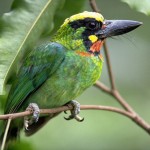 vegetation is mostly sal forest with riverine forest and grassland. Over 350 species of birds have been. re corded here -ands the main mammal species include tiger, leopard, elephant, sloth bear, wild dog, swamp deer and dolphin (in the Karnali-Girwa river).
vegetation is mostly sal forest with riverine forest and grassland. Over 350 species of birds have been. re corded here -ands the main mammal species include tiger, leopard, elephant, sloth bear, wild dog, swamp deer and dolphin (in the Karnali-Girwa river).
Best time to visit: Nov. — May Accommodation: Karnali Tented Camp a few kilometers south of Chisapani is operated by West Nepal Adventures and reservations can be made through Tiger Tops, Box No. 242, Kathmandu (Tel: 212706; Tlx: 2216 TIGTOP NP). A deluxe camp with accommodation for up to 24 people, qualified naturalists available.
Nearest town & Rail: Nepalganj. A 4-5 hour journey via Thakurdwara and Chisapani (west) by four-wheel drive vehicle. The supposedly daily bus between Nepalganj and Chisapani (West) takes 8-10 hours. Daily flights operate between Kathmandu and Nepalganj (takes one and a half hours) and the overnight bus from Kathmandu via Narayanghat and Butwai takes 20 hours.
Royal Chitwan National Park
Much of the Chitwan valley or doon was reserved for shoots by the royal family and Rana prime ministers. In 1962, a small rhinoceros sanctuary was established and in 1973 a national park of 210 sq miles (544 sq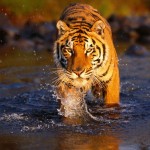 km). In 1979 the park was extended to 360 sq miles (967 sq km). The park is mostly sal forest with riverine forest and grasslands. The major river, the Narayani, and two tributaries (the Reu and the Rapti) flow through the park. Considerable research has been undertaken in the park since it was established, and two books (The Face of the Tiger by Dr Charles McDougal and The Heart of the Jungle by K. K. Gurung) are products of this work. The most important species in the park is the one-horned rhinoceros which can be easily seen from elephant back. The tiger, leopard, gaur, sambar, chital, hog deer and wild boar are some of the other animals often seen. Mugger crocodile is seen throughout the park and dolphin and gharial along the Narayani. To date, over 450 species of birds have been recorded in the park. The park is scenically very beautiful, with views of Himalayan peaks rising to over 26,000 feet (8000 meters) from only 465 feet (142 meters) above sea level.
km). In 1979 the park was extended to 360 sq miles (967 sq km). The park is mostly sal forest with riverine forest and grasslands. The major river, the Narayani, and two tributaries (the Reu and the Rapti) flow through the park. Considerable research has been undertaken in the park since it was established, and two books (The Face of the Tiger by Dr Charles McDougal and The Heart of the Jungle by K. K. Gurung) are products of this work. The most important species in the park is the one-horned rhinoceros which can be easily seen from elephant back. The tiger, leopard, gaur, sambar, chital, hog deer and wild boar are some of the other animals often seen. Mugger crocodile is seen throughout the park and dolphin and gharial along the Narayani. To date, over 450 species of birds have been recorded in the park. The park is scenically very beautiful, with views of Himalayan peaks rising to over 26,000 feet (8000 meters) from only 465 feet (142 meters) above sea level.
Best time to visit: Nov. — May (park inaccessible in July and Aug.)
Accommodation: Chitwan has perhaps the best range and highest standards of accommodation of any park in South Asia. In the western part of the park is Tiger Tops Jungle Lodge on the banks of the Reu river with 20 deluxe rooms in two treetop lodges. Activities include tiger tracking, jungle treks and excellent bird-watching. Tiger Tops Tented Camp or Bandorjhula Island in the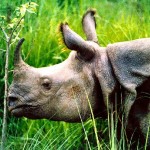 Narayani river has 12 comfortable safari tents and organizes nature walks and boat rides to view game and the diverse bridlife. To the west of the park (2 miles/3 km), is the “cultural camp” operated by Tiger Tops called Tharu Village. All bookings can be made through Tiger Tops, Box 242, Durbar Marg, Kathmandu (Tel: 212706, TIx 2216 TIGTOP NP). The lodge is open from September 1 to mid-June; the Tented Camp and Tharu Village from October 1 through May. In the Eastern part of the park are Gaida Wildlife Camp on the north bank of Dhungre Khola near Sauraha with 20 rooms. Open throughout the year and bookable through Gaida Wildlife Camp, P.O. Box 2056, Durbar Marg, Kathmandu (Tel: 215840, 410786, TIx: 2237 GAIDA NP). Chitwan Jungle Lodge near Khagendramalli has 20 rooms in cottages. Open Oct. through May. Book through Chitwan Jungle Lodge (next to Indian Airlines office), Durbar Marg, PO Box 1281. Kathmandu (Tel: 410918; TIx: 2263 METRA NP).
Narayani river has 12 comfortable safari tents and organizes nature walks and boat rides to view game and the diverse bridlife. To the west of the park (2 miles/3 km), is the “cultural camp” operated by Tiger Tops called Tharu Village. All bookings can be made through Tiger Tops, Box 242, Durbar Marg, Kathmandu (Tel: 212706, TIx 2216 TIGTOP NP). The lodge is open from September 1 to mid-June; the Tented Camp and Tharu Village from October 1 through May. In the Eastern part of the park are Gaida Wildlife Camp on the north bank of Dhungre Khola near Sauraha with 20 rooms. Open throughout the year and bookable through Gaida Wildlife Camp, P.O. Box 2056, Durbar Marg, Kathmandu (Tel: 215840, 410786, TIx: 2237 GAIDA NP). Chitwan Jungle Lodge near Khagendramalli has 20 rooms in cottages. Open Oct. through May. Book through Chitwan Jungle Lodge (next to Indian Airlines office), Durbar Marg, PO Box 1281. Kathmandu (Tel: 410918; TIx: 2263 METRA NP).
The Hotel Elephant Camp near Sauraha is just outside the park (22 rooms in five bungalows). Bookings can be made through Hotel Elephant Camp, PO Box 78, Durbar Marg, Kathmandu (Tel: 213976). In the Sauraha area are also many small-budget operations and elephants can be hired from the government elephant camp at Sauraha.
Nearest town & Air: The western end of the park is serviced by a daily flight operated by RNAC to Meghavli airfield. RNAC also operates a daily flight to Bharatpur which is a short drive from Sauraha. The park is a four- to six-hour drive from Kathmandu and Himalaya.River Exploration (PO Box 170, Durbar Marg, Kathmandu, Tel: 414508, 411562, 212706; Tlx: 2216 TIGTOP NP) operates 3-day raft trips on the Trisuli and Narayani rivers from near Kathmandu to the Tiger Tops Tented Camp.
Karnali Wildlife Reserve
Situated between the Karnali and Babai rive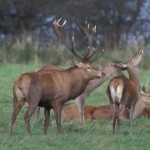 rs to the west of the Bardia Wildlife Reserve, much of this park is sal riverine forest and flat grasslands and almost a third of the area consists of stunted sal forest covering the Churia Hills. The wide range of habitats holds tiger, serow, chinkara and blackbuck, with dolphin and gharial in the river. Best time to visit: Nov — May Accommodation: Karnali Tented Camp in the Bardia Wildlife Reserve Nearest town & Air: Nepalganj
rs to the west of the Bardia Wildlife Reserve, much of this park is sal riverine forest and flat grasslands and almost a third of the area consists of stunted sal forest covering the Churia Hills. The wide range of habitats holds tiger, serow, chinkara and blackbuck, with dolphin and gharial in the river. Best time to visit: Nov — May Accommodation: Karnali Tented Camp in the Bardia Wildlife Reserve Nearest town & Air: Nepalganj
Khaptad National Park
Located in the sub-Himalayan region of West Nepal, this small park is slightly south of the Seti river. Much of the park is a plateau at about 9850 feet (3000 meters), with the highest point at 10,830 feet (3300 meters) and the slopes on all sides dropping to about 6500 feet (2000 meters). The animals seen include leopard, marten, barking deer and black bear. Best time to visit: Oct. —Nov., Mar. —Apr. Accommodation: none Air: Doti
Kosi Tapu Wildlife Reserve
This is a small reserve covering 25 sq miles (65 sq kiln) in the flood plain of the Kosi river in the Eastern Terai. The area is covered with extensive grasslands with swampy areas and waterholes created by monsoon floods. A small population of wild buffalo live in the park. The park includes islands in the Kosi river upstream of the small dam and the area atrracts thousand of migratory birds. Best time to visit: Nov. — May Accommodation: none Nearest town & Air: Biratnagar (25 miles)
Lake Rara National Park
One of Nepal’s first, this park covers an area of 41 sq miles (106 sq km) with Lake Rara at a height of 9815 feet (2990 meters) and with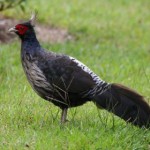 an area of 4 sq miles (10 sq km), as the focal point. The highest point is Chuchemera Dara at 13,254 feet (4038 meters). Most of the park is forested ( mainly conifers) and the animals include black bear, yellow throated marten, musk deer, goral and serow. The many birds include i peyan, kaleej and blood pheasants, and chukar, and in the winter a few migratory species such as mallard, common teal, grebes and pochards visit the lake. Best time to visit: Oct. — Nov., Feb. — Apr. Accommodation: camping permitted with permission Air: Jumla, 2-3 day’s walk away (trekking permit required)
an area of 4 sq miles (10 sq km), as the focal point. The highest point is Chuchemera Dara at 13,254 feet (4038 meters). Most of the park is forested ( mainly conifers) and the animals include black bear, yellow throated marten, musk deer, goral and serow. The many birds include i peyan, kaleej and blood pheasants, and chukar, and in the winter a few migratory species such as mallard, common teal, grebes and pochards visit the lake. Best time to visit: Oct. — Nov., Feb. — Apr. Accommodation: camping permitted with permission Air: Jumla, 2-3 day’s walk away (trekking permit required)
Langtang National Park
The largest of Nepal’s national parks with an area of 659 sq miles (1710 sq km) lies almost directly north of Kathmandu. The Langtang valley is bordered on the north by the main crest of the Himalaya dominated by Langtang Lirung (23,780 feet/7245 meters). To the south are the Chimse Danda ridge, crossed by the Ganja Lal (16,810 feet/5122 meters) and the Dorje Himalaya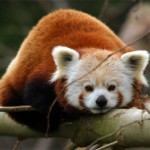 culminating in Dorje Lakpa (22,940 feet/6989 meters). The vegetation ranges from alpine meadow to juniper, birch, rhododendron, fir, blue pine and chir pine as the height descends from 14,750 feet (4500 meters) to 5000 feet (1500 meters) at Syabrobensi. The Langtang river flows through dense deciduous forest to join the Bhole Kosi flowing from Tibet to form the Trisuli river. The forest and alpine pastures are home to barking deer, black bear, leopard, goral in the lower forested areas and tahr, musk deer, and possibly snow leopard in the alpine regions. A wide range of pheasants and other birds are seen. Best time to visit: Oct. — Nov., Mar. — early May Accommodation: camping allowed within the park Air: Kathmandu (three and a half hours drive from Trisuli Bazar). The road from Kathmandu is being extended to Dhunche, trekking permit required.
culminating in Dorje Lakpa (22,940 feet/6989 meters). The vegetation ranges from alpine meadow to juniper, birch, rhododendron, fir, blue pine and chir pine as the height descends from 14,750 feet (4500 meters) to 5000 feet (1500 meters) at Syabrobensi. The Langtang river flows through dense deciduous forest to join the Bhole Kosi flowing from Tibet to form the Trisuli river. The forest and alpine pastures are home to barking deer, black bear, leopard, goral in the lower forested areas and tahr, musk deer, and possibly snow leopard in the alpine regions. A wide range of pheasants and other birds are seen. Best time to visit: Oct. — Nov., Mar. — early May Accommodation: camping allowed within the park Air: Kathmandu (three and a half hours drive from Trisuli Bazar). The road from Kathmandu is being extended to Dhunche, trekking permit required.
Sagarmatha National Park (Everest N.P.)
Established in July 1976, this park covering 480 sq miles (1243 sq km) is known as Khumbu in the northeast. The spectacular mountain scenery includes Mount Everest, and it is from the peak’s Nepali name that the park gets its name. Sagarmatha means “mother of the universe”. In 1979 the park was declared a World Heritage Site and became eligible for additional funds and support from UNESCO. The park’s original establishment was assisted by six years’ support from the government of New Zealand.
The park is bordered to the north by Tibet and the ridge never drops below 18,700 feet (5700 meters). Apart from Everest at 29,028 feet (8848 meters), two other 8000 meter peaks fall within the park: Choster (27,903 feet/8501 meters) and Chooyu (26,760 feet/ 8186 meters). Much of the park is rugged, with deep gorges and glaciers breaking the terrain. Access to the area is throu gh the Dudh Kosi river valley but is restricted by the narrow gorges. Unique among South Asia’s parks, Sagarmatha has a large and permanent human population. The Sherpa villages are islands within the park but do not fall under its authority. The Sherpa manage through cultivation of some areas, but many now earn their living through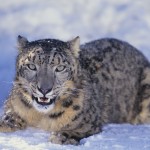 tourism, handling treks and assisting climbs. Of the villages in the park, most are located at the southern portion where the Dudh Kosi, lmie Kosi, Kyajo Brahgha and Thengpo Kola valleys meet and the rivers flow south to join the Kosi river and ultimately flow into the Ganga. The park’s forested areas are only a small proportion of the total and these are being subjected to thinning at an alarming rate due to the demand for fuel wood.
tourism, handling treks and assisting climbs. Of the villages in the park, most are located at the southern portion where the Dudh Kosi, lmie Kosi, Kyajo Brahgha and Thengpo Kola valleys meet and the rivers flow south to join the Kosi river and ultimately flow into the Ganga. The park’s forested areas are only a small proportion of the total and these are being subjected to thinning at an alarming rate due to the demand for fuel wood.
The main tree species are rhododendron, birch, blue pine, juniper and silver fir, which give way to scrub and alpine plants and then bare rock and snow. The rhododendron forests bloom in the spring (April and May) although many of the flowers are in bloom during the monsoon months of June to August. The animals in the park most often seen are tahr, goral, serow and musk deer.
Black bear, marten weasel, marmot, red panda, mouse hare and langur are also occasionally seen. The presence of snow leopard within the park is doubted by many authorities. At least 118 species of bird are found within the park and many other migrant species probably stop for a sojourn or overfly. Of the pheasants, the impeyan (monal) and blood pheasant are the most common. Both the red-billed and yellow-billed choughs, snow pigeon, skylarks, the Himalayan griffon and lammergier are also fairly common. The park headquarters is at Nande Bazar on Mendaiphu Hill. Best time to visit: Oct. — May, Dec. Feb. (day temperatures below freezing) Accommodation: The Nainche , Thyangboche, Pheriche and Lobuche villages all have accommodation and food supplies. There are many tea shops on trekking routes which provide simple food. Above the Shyangbocle airstrip is the Hotel Everest View which can be booked through Kathmandu travel agents. Nearest town & Air: Lukia is two days’ walk and Lamosangu (10-14 days’ walk) is the closest road head with regular buses from Kathmandu.
Shey Wildlife Reserve
Covers over 160 sq miles (415 sq km) of secluded Tibetan and trans-Himalayan habitat in Dolpho district of northwestern Nepal. Largely undisturbed the area was made famous by Peter Mattiessen’ s book, The Snow Leopard. The area is extremely barren, with pine, juniper and small bushes in the valleys. The main animals are blue sheep, yak, goral, musk der, tahr, bear, muntjac and snow leopard. The area around Lake Phuksunda has some spectacular scenery. Best time to visit: Oct. —Nov., Mar. — May Accommodation: none

